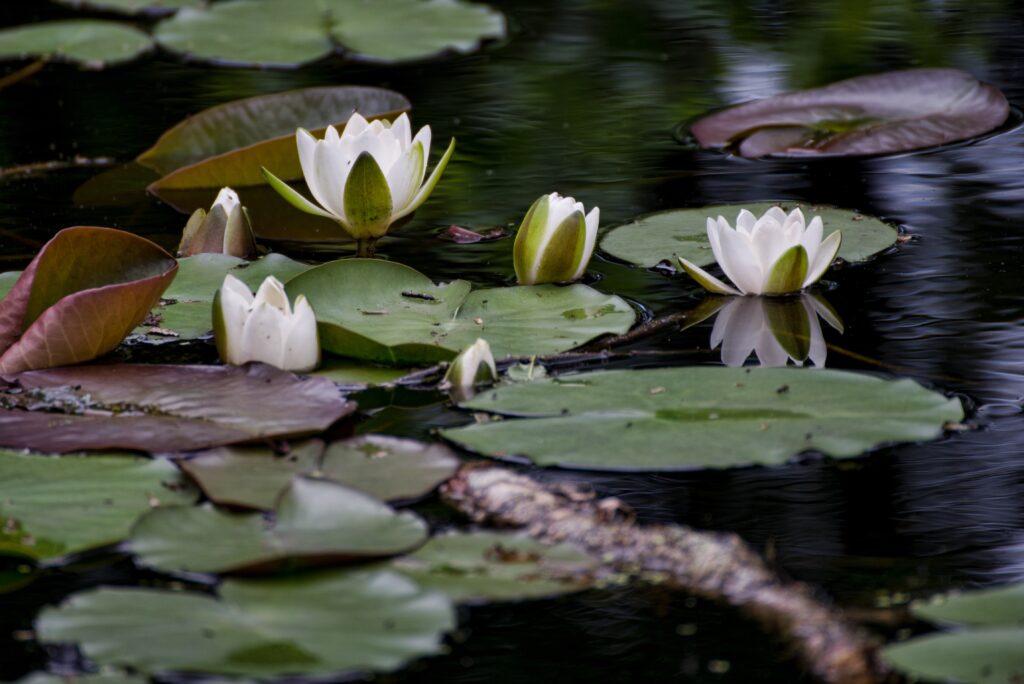Wildlife Ponds; how to set one up and its benefits.

To celebrate the expansion and overhaul of our new Pond Plant area we have written this piece on how to create a wildlife pond in your garden and the benefits it will bring. We have all you need to get a beautiful and really eco-friendly wildlife pond now in our plant area.
If you’re looking for a way to create a sustainable and eco-friendly outdoor space, setting up a wildlife pond is a great place to start. Wildlife ponds offer a range of benefits, from providing a habitat for local wildlife to improving the overall biodiversity of your garden. In this blog post, we’ll take a look at how to set up a wildlife pond and explore its benefits.
- Plan the location and size of your pond
Before you start digging, you’ll need to plan the location and size of your pond. The ideal location is in a sunny spot, away from trees and shrubs that could shade the pond and drop leaves into the water. As for size, a good rule of thumb is to aim for a pond that is at least 1.5 meters in diameter and 60 centimeters deep. This will provide enough space for a variety of aquatic plants and animals to thrive.
- Dig and shape your pond
Once you’ve decided on the location and size, it’s time to start digging. Use a shovel or a small excavator to dig out the shape of your pond, making sure to create varying depths and shelves for plants and creatures to live in. You can also add rocks and logs to create hiding places and shelter for wildlife.
- Line your pond
Once you’ve finished shaping your pond, it’s time to line it to prevent water from seeping into the ground. You can use a pond liner or a preformed pond shell to do this. Make sure to create a smooth base for the liner to prevent wrinkles, which can create weak spots and lead to leaks.
- Add water and plants
After you’ve lined your pond, it’s time to add water. Use a hose or a bucket to fill your pond with water. Before adding plants, it’s important to wait a few days to allow the chlorine in the water to dissipate. Once the water is ready, you can start adding plants to your pond. Native plants such as water lilies, irises, and rushes are great choices for attracting wildlife and creating a natural look.
- Maintain your pond
Finally, it’s important to maintain your pond to keep it healthy and thriving. This includes regular maintenance such as removing debris and dead plant matter, controlling algae growth, and topping up the water level as needed. You should also avoid introducing non-native plants or animals that could disrupt the balance of your pond’s ecosystem.
Now that you know how to set up a wildlife pond, let’s take a look at some of its benefits:
- Provides a habitat for local wildlife
A wildlife pond provides a valuable habitat for a range of aquatic and semi-aquatic creatures such as frogs, toads, newts, dragonflies, and water insects. By creating a natural space for these animals, you can contribute to local biodiversity and help to create a healthier ecosystem in your garden.
- Enhances the beauty of your garden
A well-designed wildlife pond can add a stunning visual element to your garden, with the reflection of the sky and surrounding foliage creating a tranquil and serene atmosphere. You can also enhance the beauty of your pond by planting native aquatic plants and adding decorative features such as rocks, logs, and sculptures.
- Improves water quality
A wildlife pond can help to improve the quality of the water in your garden by filtering out pollutants and impurities. The plants in your pond absorb nutrients and chemicals, reducing the amount of algae and bacteria in the water. This can also benefit other plants in your garden by providing a source of natural fertilizer.
- Supports education and research
A wildlife pond can also be a great educational resource, providing a unique opportunity to observe and learn about local
wildlife in their natural habitat. It can be a great learning tool for children, who can observe the life cycle of aquatic animals and learn about the importance of biodiversity and conservation. Additionally, a wildlife pond can also be a valuable research tool for scientists and conservationists, providing a controlled environment for studying aquatic ecosystems and monitoring the impact of human activities on wildlife populations.
In conclusion, setting up a wildlife pond is a great way to create a sustainable and eco-friendly outdoor space. By providing a habitat for local wildlife, enhancing the beauty of your garden, improving water quality, and supporting education and research, a wildlife pond offers a range of benefits for both you and the environment. So why not take the plunge and start creating your own wildlife pond today?
